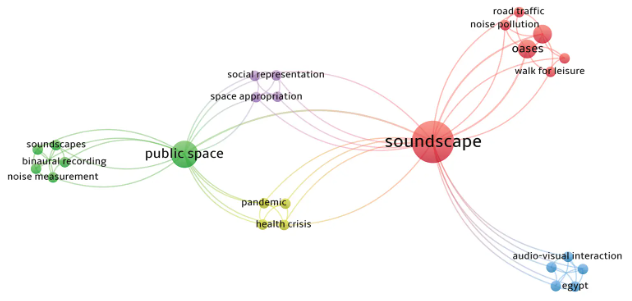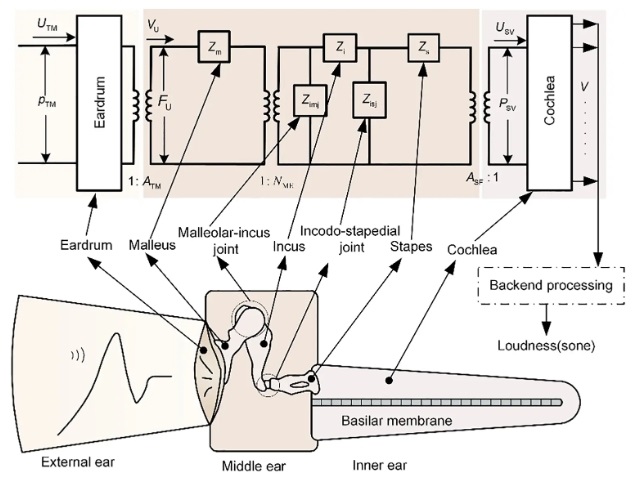Acoustic multi-objective optimization of porous media properties of a diesel particulate filter
Abstract
Studies on emission control systems have proliferated because of increasing environmental regulations in recent decades. One of the most important emission control systems in vehicles is the Diesel Particulate Filter (DPF). DPFs are important for not only the harmful emission of soot particles but also acoustic emissions. In this study, the acoustic behavior of DPFs was investigated. The study presents an acoustic multi-objective optimization of the porous media properties of a DPF. The multi-objective optimization was performed using the Non-Dominated Sorting Genetic Algorithm (NSGA-II) to obtain an optimum DPF design. In this study, we aimed to maximize the acoustic transmission losses (TL) of the DPF and minimize the pressure drop according to the porous media properties. The DPF wall permeability, channel width, channel wall thickness and channel number were chosen from the porous media properties as design variables for the optimization problem. Test studies have been conducted to validate the mathematical model utilized in optimization. Following these investigations, it has been concluded that the mathematical model, verified through experimental research, is now considered a viable model for resolving the optimization problem. As a result, an optimum DPF design that provides both objective functions was proposed.
References
[1]G. Konstandopoulos, J. H. Johnson, “Wall-flow diesel particulate filters - their pressure drop and collection efficiency”, Society of Automotive Engineering, SAE Paper No. 890405, 1989.
[2]S. Allam, M. Abom, “Acoustic modeling and testing of diesel particulate filters”, Journal of Sound and Vibration, 288, 255-273, 2005.
[3]E. Dokumaci, “Sound transmission in pipes with porous walls”, Journal of Sound and Vibration, 329, 5346-5355, 2010.
[4]G. Wenzhi, F. Liming, “FEM analysis on acoustic performance of wall-flow diesel particulate filters", Chinese Journal of Mechanical Engineering, 24, 2011.
[5]S.M. Fayyad, M.N. Hamdan, S. Abu-Ein, "Four-port noise model for the diesel particulate filters (DPF)", Jordan Journal of Mechanical and Industrial Engineering, 5, 495-507, 2011.
[6]Z.G. Liu, R.K. Miller, "Flow distributions and pressure drops of wall-flow diesel particulate filters", Society of Automotive Engineering, SAE Paper, 2002, 2002011311.
[7]Katari, M. Syed, M. Sickels, T. Wahl, S. Rajadurai, "Effect of aspect ratio on pressure drop and acoustics in diesel particulate filters", SAE International, 2004, 2004010695.
[8]Zhang, Z., Dong, R., Lan, G., Yuan, T., & Tan, D. (2023). Diesel particulate filter regeneration mechanism of modern automobile engines and methods of reducing PM emissions: A review. Environmental Science and Pollution Research. Springer.
[9]Tan, P., Wang, D., Yao, C., Zhu, L., Wang, Y., Wang, M., & Hu, Z. (2020). Extended filtration model for diesel particulate filter based on diesel particulate matter morphology characteristics. Fuel, Elsevier.
[10]Lisi, L., Landi, G., & Di Sarli, V. (2020). The issue of soot-catalyst contact in regeneration of catalytic diesel particulate filters: A critical review. Catalysts, MDPI.
[11]Zhang, Z., Dong, R., Tan, D., Duan, L., Jiang, F., & Yao, X. (2023). Effect of structural parameters on diesel particulate filter trapping performance of heavy-duty diesel engines based on grey correlation analysis. Energy, Elsevier.
[12]Meng, Z., Wang, W., Zeng, B., Bao, Z., Hu, Y., & Ou, J. (2023). An experimental investigation of particulate emission characteristics of catalytic diesel particulate filters during passive regeneration. Chemical Engineering Science, Elsevier.
[13]F. Payri, A. Broatch, J.R. Serrano, P. Piqueras, “Experimental-theoretical methodology for determination of inertial pressure drop distribution and pore structure properties in wall-flow diesel particulate filters (DPF)”, Energy, 36, 6731-6744, 2011.
[14]S. M. Fayyad, “Reducing noise and emissions of automobiles using diesel particulate filters”, Proceedings of the 14th International Conference on Environmental Science and Technology, Rhodes, Greece, 3-5 September, 2015.
[15]W. Momani, “Effect of porous media properties on transmission losses of a diesel particulate filter unit”, Journal of Engineering Sciences, 36-4, 813- 824, 2008.
[16]C. E. Sprouse III, M.D. Mangus, C.D. Depcik, “Diesel particulate filter model with detailed permeability analysis”, Proceedings of the ASME 2011 International Mechanical Engineering Congress & Exposition IMECE 2011, Denver, Colorado, USA, 11-17 November, 2011.
[17]G. A. Stratakis, D. L. Psarianos, A. M. Stamatelos, “Experimental investigation of the pressure drop in porous ceramic diesel particulate filters”, Journal of Automobile Engineering, 216, 773- 784, 2002.
[18]M. Masoudi, A. Heibel, P.M. Then, “Predicting pressure drop of Wall-flow diesel particulate filters-theory and experiment”, Society of Automotive Engineering, SAE Paper, 2000; 2000010184.
[19]J. Michelin, B. Figueras, C. Bouly, B. France, D. Maret, “Optimized Diesel Particulate Filter System for Diesel Exhaust Aftertreatment,” Society of Automotive Engineering, SAE Paper, Vol. 2000, no. 724, 2000.
[20]C. Barataud, S. Bardon, B. Bouteiller, and V. Gleize, “Diesel Particulate Filter Optimization Reprinted From: Diesel Exhaust Emissions Control,” Society of Automotive Engineering, SAE Paper, No. 724, 2003.
[21]S. Ozturk and H. Erol, “Multi-objective optimization of a diesel particulate filter: an acoustic approach,” Part. Sci. Technol., vol. 40, no. 4, pp. 465–474, 2022.
[22]F. Jun, G. Jinke, L. Yunqing, J. Guohai, “Study on Structure Optimization of Diesel Particulate Filter Based on Flow Field Distribution Characteristics,” 2011 Int. Conf. Comput. Distrib. Control Intell. Environ. Monit., no. 1, pp. 616–619, 2011.
[23]S. Fujii, T. Asako, K. Yuuki, “Studies of diesel particulate filter performances by a diesel engine simulator”, SAE International, 2010; 2010010813.
[24]J. T. Hicks, W. E. Hill, A.J. Kotrba, “DPF acoustic performance: an evaluation of various substrate materials and soot conditions”, SAE International, 2011; 2011012198.
[25]J. H. Johnson, A. G. Konstandopoulos, “A study describing the performance of diesel particulate filters during loading and regeneration- a lumped parameter model for control applications”, SAE Journal, 2003; 2003010842.
[26]D. E. Goldberg, Genetic Algorithms in Search Optimization and Machine Learning. USA: Addison Wesley Publishing Company, 1989
[27]Konstandopoulos, A.G. (2003). Flow Resistance Descriptors for Diesel Particulate Filters: Definitions, Measurements and Testing, SAE Tech. Pap. Ser., 2003–01–08, no. 724.
Copyright (c) 2024 Sinem Ozturk, Haluk Erol

This work is licensed under a Creative Commons Attribution 4.0 International License.









